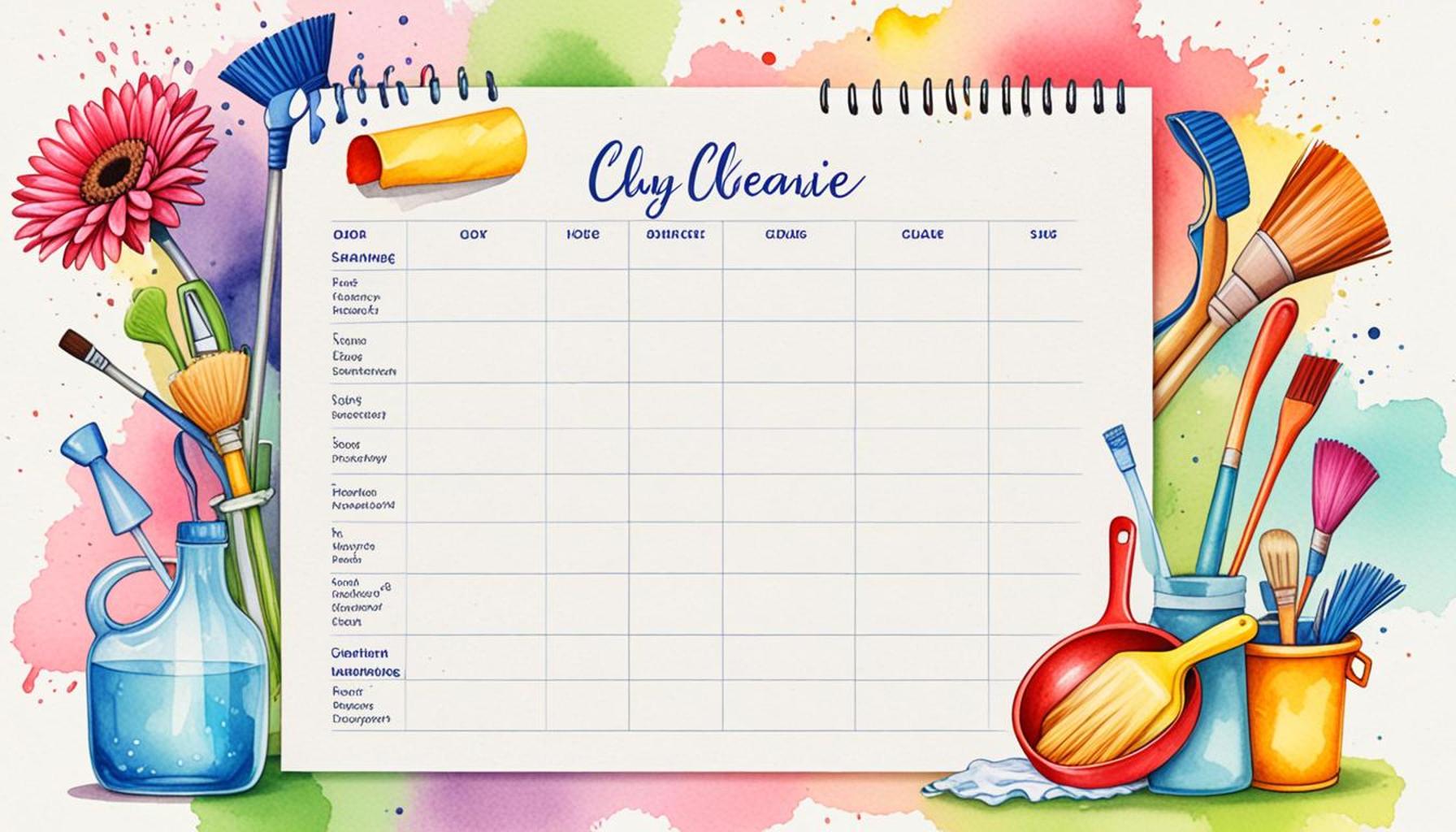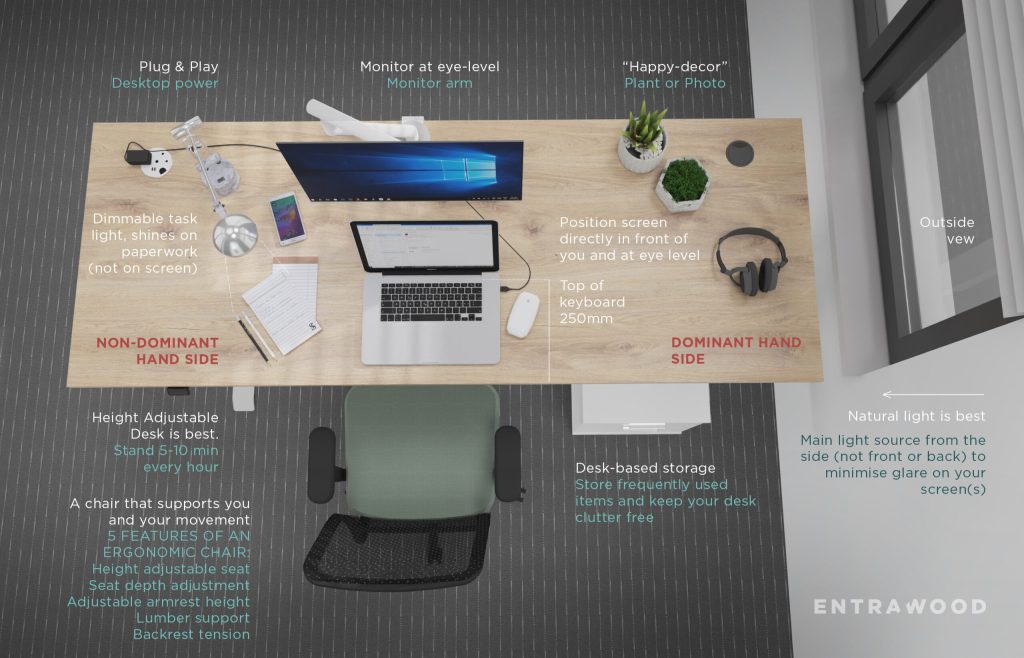How to Create a House Cleaning Schedule That Maximizes Your Productivity

The Art of a Cleaning Schedule
In an age where multitasking is essential, many people find themselves overwhelmed by the demands of a busy lifestyle. Work commitments, family responsibilities, and personal endeavors can easily pile up, leaving household chores neglected. The result? An environment plagued by clutter and the stress that accompanies it. Establishing a well-structured house cleaning schedule is key to mitigating this chaos and enhancing your overall productivity. A cleaning routine not only makes the task more manageable, but it fosters a sense of accomplishment and tranquility within your home.
Understanding the Fundamentals
When crafting your cleaning schedule, it’s crucial to create a plan that resonates with your unique lifestyle and preferences. Here are some robust principles that can guide you:
- Prioritization: Start by assessing your home and identifying areas that need immediate attention. High-traffic zones such as the kitchen or living room often accumulate dirt and clutter faster than others. Consider establishing a “cleaning spotlight” approach, whereby you focus on one room or area at a time, ensuring it’s thoroughly cleaned before moving on.
- Time Allocation: Be realistic about how much time you can dedicate to cleaning tasks. If you know you have a busy week ahead, try segmenting your cleaning into higher intensity bursts of activity, such as 20-30 minute sessions daily, rather than attempting to clean your entire house all at once weekly. Using a timer can add a gamified element to these sessions.
- Flexibility: Life is unpredictable—unexpected events can disrupt the best-laid plans. Build some flexibility into your schedule by allowing for shiftable tasks or lighter cleaning days that can accommodate any surprises. This ensures that maintaining cleanliness remains stress-free, rather than adding more demands to your day.
The Benefits of a Cleaning Routine
Implementing a structured cleaning schedule can bring considerable benefits. For instance, dedicating just a couple of hours on a Saturday morning to deep-clean can give you a refreshingly clean home for the entire week. Moreover, such routines often lead to discovering hidden treasures in neglected corners, serving as a delightful surprise during mundane tasks.
Furthermore, consider how an efficient cleaning schedule can liberate your evenings and weekends for more enjoyable activities, allowing you to spend quality time with loved ones, pursue hobbies, or simply relax in a tidy environment. Imagine coming home after a long day’s work to a clean and inviting space, free from the burden of chores that await you.
By the end of this article, you will be equipped with the tools to create a personalized cleaning schedule that not only enhances your living conditions but also optimizes your time management. Prepare to revolutionize the way you approach household chores, making cleaning a productive and less burdensome part of your routine!

DON’T MISS OUT: Click here to discover how to transform your cleaning routine!
Creating a Custom Cleaning Blueprint
The first step in developing a house cleaning schedule that maximizes your productivity is understanding the layout of your home and the unique demands it presents. Every home is a reflection of its inhabitants, shaped by individual habits, family dynamics, and even seasonal changes. To design an effective cleaning plan, consider the following elements:
Assess Your Space
Begin by walking through your home and taking stock of each room’s condition. This assessment will help you identify areas that require more frequent attention versus those that can be cleaned less regularly. Pay particular attention to the following:
- High-Usage Areas: Rooms such as the kitchen and bathrooms typically require more frequent cleaning due to heavier foot traffic and potential for mess. Establish a more rigorous cleaning routine for these spaces, such as daily wipes and weekly deep cleans.
- Under-utilized Zones: Rooms that are used less often, such as guest rooms or home offices, can be scheduled for infrequent, lighter cleaning. You might consider a monthly maintenance check to keep dust and clutter at bay.
- Seasonal Tasks: Don’t forget to include seasonal cleaning chores, such as window washing in the spring or clearing out gutters in the fall. Factor in these unique tasks into your long-term cleaning schedule to avoid feeling overwhelmed as the seasons change.
Crafting a Weekly Plan
With a clear understanding of your home’s needs, you can begin sketching out a weekly cleaning agenda. Many find it helpful to assign specific days for particular tasks—this approach not only breaks chores into manageable segments but also ensures that nothing falls through the cracks:
- Monday: Dust and Vacuum – Focus on high-traffic areas and dust surfaces. Target your living room and hallways to start the week off fresh.
- Tuesday: Kitchen Deep Clean – Scrub surfaces, sanitize the sink, and tackle the refrigerator. A clean kitchen can dramatically affect your productivity, especially when preparing meals for the week.
- Wednesday: Bathroom Maintenance – Clean toilets, sinks, and showers. A mid-week refresh keeps these high-use spaces sanitary and pleasant.
- Thursday: Decluttering Day – Tackle a specific area each week, such as a closet or storage space. This prevents clutter buildup and creates a more functional living environment.
- Friday: Floors Focus – Spend time mopping and detailing floors, laying the groundwork for a clean home over the weekend.
- Saturday: Family Cleaning Day – Get everyone involved! Assign age-appropriate chores to family members to create a shared responsibility and bond over teamwork.
- Sunday: Review and Plan – Take a moment to review the week’s cleaning achievements and plan for the following week. This reflection boosts motivation and keeps everyone accountable.
By establishing a custom cleaning blueprint tailored to your household’s specific needs, you can turn cleaning from a daunting task into a well-oiled process that promotes productivity throughout your life. With this routine in place, the chaos of household duties can be minimized, allowing more space for relaxation and enjoyment in your personal life.
How to Create a House Cleaning Schedule That Maximizes Your Productivity
Creating a house cleaning schedule is an effective way to enhance productivity and ensure your living space remains organized and inviting. To maximize the benefits of your schedule, it’s essential to identify key elements that will help streamline the process.
1. Prioritize Tasks
Begin by listing all necessary cleaning tasks, then categorize them based on their frequency and importance. Daily tasks may include washing dishes and tidying up common areas, whereas weekly tasks could involve vacuuming and changing bed linens. This not only allows you to focus on high-impact tasks but also helps in managing your time efficiently.
2. Time Blocking
Implement time blocking to allocate specific periods for cleaning tasks. Whether you dedicate 30 minutes daily or set aside larger chunks of time on weekends, this method minimizes distractions and fosters a conducive environment for productivity.
3. Utilize Technology
Consider using apps that facilitate organization and reminders, allowing you to stay on track with your cleaning schedule. Many apps offer customizable checklists and alerts, ensuring that no task is overlooked.
4. Incorporate Breaks
While cleaning, remember to schedule short breaks to recharge. This will prevent burnout and maintain your motivation throughout your cleaning routine.
5. Adjust and Adapt
As you establish your cleaning schedule, it’s important to remain flexible. Life can be unpredictable, so modifying your plan according to changing circumstances will keep you on top of your cleaning without causing stress.
| Category | Details |
|---|---|
| Time Management | Allocating specific times for cleaning increases focus and reduces procrastination. |
| Routine Adjustment | A flexible schedule allows adaptation to unexpected events, maintaining productivity without added stress. |
By incorporating these key strategies into your cleaning schedule, you’ll not only keep your home clean but also enhance your overall productivity, making the task more manageable and less daunting.
DISCOVER MORE: Click here for insights on preventive maintenance benefits
Incorporating Flexibility into Your Schedule
While a structured cleaning routine is essential, it’s equally important to incorporate flexibility. Life is unpredictable, and sometimes things don’t go as planned—whether it be unexpected guests, a busy work week, or family commitments. By building adaptability into your house cleaning schedule, you can maintain productivity without feeling the pressure of rigidity:
Utilizing Time Blocks
Consider utilizing the potent strategy of time blocking. This method involves breaking your cleaning tasks into specific time slots throughout the day or week, which can be particularly effective for busy households. Align your cleaning schedule around your personal and family routines. For example:
- Morning Power Hour: Dedicate an hour first thing in the morning, perhaps after breakfast, to tackle smaller tasks that can create a ripple effect of cleanliness. This could include wiping down counters or making beds.
- Evening Wind-Down: Use the last 15 to 30 minutes before bed for quick clean-up—this sets a peaceful scene for the next day. Simple tasks like fluffing cushions or putting away stray items can make a big difference.
Time blocking not only allows you to integrate cleaning into your daily life but also ensures that you remain productive without overwhelming yourself.
Creating a Chore Chart for Family Engagement
Engaging family members in the cleaning process can also offer a boost to your overall productivity. By developing a chore chart, everyone can take ownership of their responsibilities while also reducing the burden on one person. When drafting your chore chart, keep the following in mind:
- Age-appropriate Tasks: Assign tasks based on each family member’s age and capability. Young children can help with simple tasks like sorting laundry or dusting furniture, while older kids can handle more advanced chores like vacuuming or washing dishes.
- Rotate Responsibilities: To prevent monotony and encourage active participation, rotate tasks weekly or monthly. This change can keep cleaning from feeling like a chore and instill a sense of teamwork within the household.
- Incentivize Participation: Consider implementing a rewards system for completed tasks. Small incentives can increase motivation and make cleaning a more enjoyable family activity.
Leveraging Technology for Efficiency
In today’s digital age, there are numerous apps and tools available that can assist you in creating and maintaining an effective cleaning schedule. Utilizing technology can enhance your productivity by reminding you of tasks and helping to keep things organized:
- Cleaning Schedule Apps: Download apps designed for household management that allow you to create customized cleaning checklists and set reminders. Apps like “Tody” and “OurHome” not only keep track of chores but also enable family members to join in and monitor their progress.
- Smart Home Devices: Consider investing in smart home devices such as robot vacuums or automated cleaning systems. These devices can take repetitive tasks off your plate, allowing you more time to focus on other priorities.
By harnessing the power of technology alongside adaptive strategies, you can create a house cleaning schedule that not only maximizes productivity but also accommodates the fluid nature of everyday life. The key lies in finding the right blend of structure and flexibility tailored to your household’s unique rhythm.
DISCOVER MORE: Click here to find out how checklists can boost household accountability
Conclusion
In conclusion, crafting a house cleaning schedule that maximizes your productivity is not a one-size-fits-all approach; it necessitates thoughtful consideration of your unique lifestyle and household dynamics. This means identifying the specific needs and rhythms of your household—whether you have young kids, pets, or work from home—that influence how and when you can clean. For instance, if you have children, engaging them through fun and age-appropriate chore charts can teach responsibility while fostering teamwork. You might designate Saturdays for family cleaning days, where everyone participates, making the daunting task of cleaning more manageable and even enjoyable.
Establishing a structured yet flexible cleaning routine is key. Consider utilizing time blocks to prioritize cleaning tasks, allowing for greater efficiency. For example, allocate 15 minutes at the start of each day for quick tasks like making beds and wiping down countertops. In contrast, reserve a longer chunk of time on weekends for deep cleanings, such as vacuuming carpets or scrubbing bathrooms. This method not only breaks down the cleaning process into digestible pieces but also helps prevent feelings of overwhelm, allowing you to maintain motivation.
Moreover, embracing technology can significantly enhance your cleaning efforts. Numerous apps, such as Todoist or OurHome, can help you create and manage tasks systematically. Smart home devices, like robotic vacuums or smart plugs, can automate certain chores, ensuring that your home stays clean with minimal effort. Some devices even allow for scheduling, enabling you to set them to clean while you’re away, thus maximizing your time and energy.
Ultimately, the most effective cleaning schedule is one that evolves with your needs. As you experiment and discover what works best for your household, you may find that the cleaning process becomes more of a source of satisfaction rather than a chore. Regularly reassess your schedule; perhaps seasonal changes or new responsibilities may require adjustments. The goal is to create a space that promotes productivity and comfort—one that reflects the rhythm of your life. Embrace this journey towards a well-organized and efficiently maintained home, and you’ll soon experience the profound benefits of a tranquil and welcoming environment.


